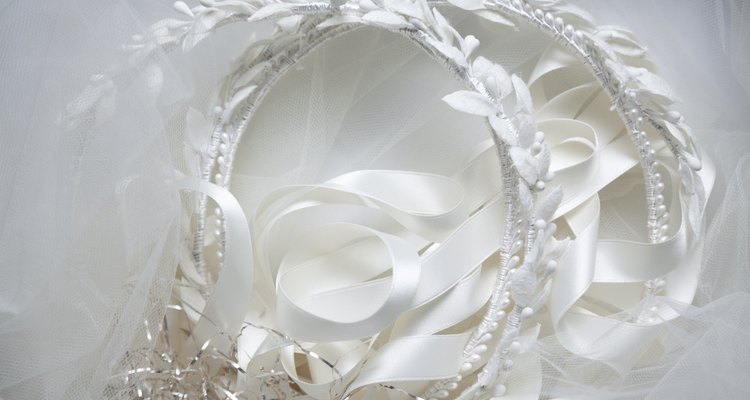
portokalis/iStock/Getty Images
At a Greek Eastern Orthodox wedding, the bride often chooses a "koumbara" to perform the maid of honor duties as well as others specific to the Greek Church. The koumbara is the individual who attends to the bride, assists her during the ceremony and serves as a sponsor to the wedding covenant. The koumbara may share her duties with a male attendant, called a "koumbaro." The groom chooses the koumbaro as his attendant. The honorable title of koumbara is typically bestowed on someone who is very close to the bride, and the duties of the role call for her to continue to be in the lives of the couple for quite a long time.
Church Duties
The koumbara serves as the sponsor or witness of the wedding for the Greek couple. As an ecclesiastical witness, the koumbara must meet specific requirements set forth by the church. She must be a member of a Greek Orthodox Church or an orthodox church, depending on which the ceremonial church requires. If she is not a member of the church where the ceremony is being held, the koumbara must have a letter of introduction from the church at which she is a member in good standing. If the koumbara is married, the Orthodox Church must have blessed her marriage. Once all of these requirements have been verified, the koumbara has met her church duties.
Ceremonial Duties
During the ceremony, the koumbara has to perform the traditional maid of honor duties, such as straightening the bride’s veil and dress and holding her bouquet, as well as Greek-specific duties. There are times where a bride can choose to have a non-Greek maid of honor. In this case, she would be at the altar with the other bridesmaids and mentioned in the program. The maid of honor may hold the bouquet, but it is the koumbara who stands next to the bride during the ceremony. During the ceremony, the couple raise the "stephana" -- two decorated wedding crowns connected by a long ribbon -- above their heads and switch the crowns three times, symbolizing the joining of two people as one. The koumbara places the wedding rings on the fingers of the bride and groom. The stephana is laid on the heads of the couple and the priest walks them around the altar in a circle so they make take their first steps as a couple. The koumbara follows the couple and holds up the ribbon that connects the stephana.
Financial Duties
The koumbara must provide items for the ceremony as well as some gratuities. She must purchase a tray to use during the wedding. Most trays are made of silver, but some attendants do opt for ones made of gold or platinum. The tray will hold rice and "koufeta" -- candy-coated almonds. In addition to the tray, she supplies the stephana and the candles for the service. The koumbara also pays the priest a gratuity for performing the ceremony.
Post-Ceremonial Duties
After the wedding, the couple may have a child or even children. Each child in the Greek Orthodox Church is typically baptized and given a godmother, or a "nouna," and godfather, or a "nouno." The koumbara is often called upon to be the child’s nouna. She is asked to be the witness to the child as she was to the wedding. If she accepts the honor, the koumbara promises to help raise the child to live a life following the Orthodox Church and its beliefs.
Related Articles

What Is the Godparents' Responsibility ...

Mexican Catholic Wedding Traditions
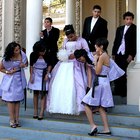
Mexican Quinceanera Traditions
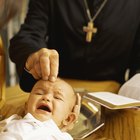
The Godfather's Responsibilities on the ...
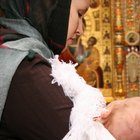
The Purpose of Christening

Quinceanera Requirements

How to Use a Veil & Cord in a Wedding

Swedish Wedding Gifts

What Are the Duties of the Groom's Aunt ...
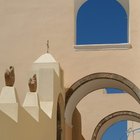
Etiquette on the Costs of a Greek ...

Greek Baptism Gifts

What Are the Duties of a Godparent?

Quinceanera Rituals

Romanian Orthodox Wedding Traditions

Do the Groom's Parents or Bride's ...

What Does the Godmother Do for the ...

Wedding Ceremony Sequence of Events

How Do You Address Wedding Invitations ...

Muslim Wedding Etiquette

Japanese Engagement Customs
References
Writer Bio
Caroline Baldwin, a corporate communications director located in South Carolina, began writing in 1998. Her work has been published in publications across the United States and Canada including Rolling Stone, Boating Life, Waterski and Wakeboarding magazines. She holds a Bachelor of Arts in communication studies from The College of Charleston.
Photo Credits
portokalis/iStock/Getty Images